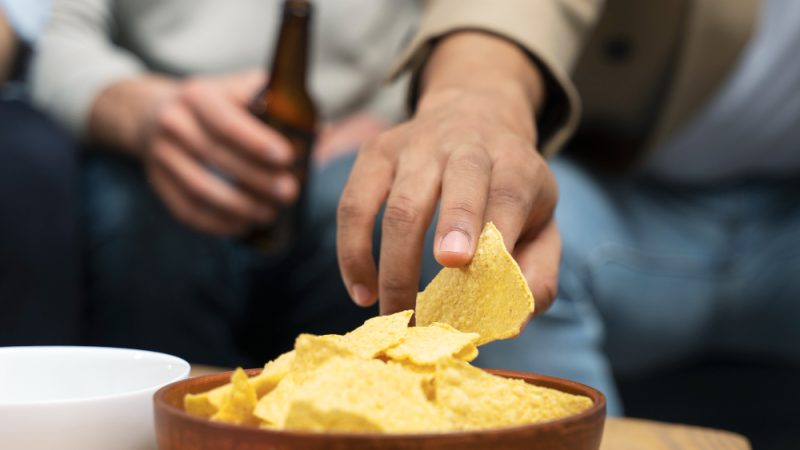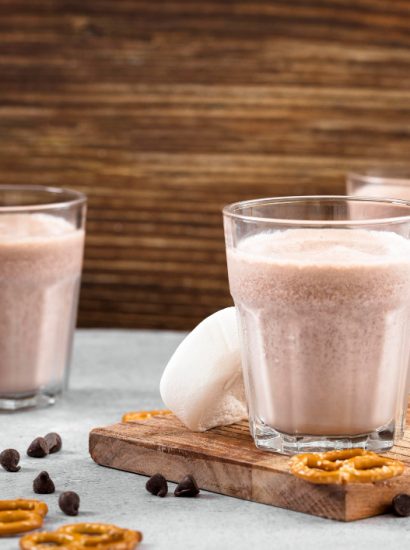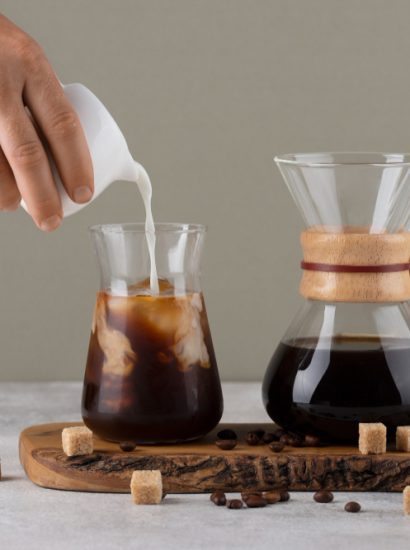Skin on chips are not just a delicious snack but also a testament to the art of achieving crispy perfection. Unlike conventional chips that are often bland and lacking in texture, skin on chips retain their delightful skin, which adds an extra layer of flavor and crunch. Getting that perfect crispy texture requires more than just tossing some potatoes into a fryer; it involves a combination of careful selection, preparation, and cooking techniques. In this comprehensive guide, we’ll explore five expert tips that will help you master the art of making skin on chips with a perfectly crispy texture. Whether you’re baking, frying, or air frying, these tips will ensure that every batch of skin on chips you make is crisp, golden, and absolutely delicious.
1. Choosing the Right Potatoes
The journey to perfect skin on chips begins with selecting the right type of potato. Potatoes come in various types, each with its own characteristics, and not all are suitable for making crispy chips. To achieve the best results, it’s crucial to understand the different types of potatoes and choose the ones that will give you the crispiness you desire.
Starchy vs. Waxy Potatoes
Potatoes can be broadly classified into two categories: starchy and waxy. Starchy potatoes, such as Russets and Idaho potatoes, have a high starch content and a low moisture level. This combination is ideal for making crispy skin on chips. The high starch content helps create a crispy exterior while keeping the interior tender. Waxy potatoes, like Red Bliss or fingerling potatoes, have a higher moisture content and lower starch levels, which can lead to a more moist and less crispy chip. For the best skin on chips, stick to starchy varieties.
Selecting the Best Potatoes
When choosing potatoes for skin on chips, look for ones that are firm, with smooth skins and minimal blemishes. Avoid potatoes with green spots or sprouting, as these can be bitter and affect the flavor of your chips. Additionally, try to select potatoes that are roughly the same size to ensure even cooking. If you can’t find starchy potatoes, you can use a combination of starchy and waxy types, but remember that the result might not be as crispy.
2. Preparing the Potatoes Correctly
Proper preparation is key to achieving that perfect crispy texture in skin on chips. From washing and cutting to soaking, every step in the preparation process plays a significant role in the final outcome.
Washing and Drying
Start by washing the potatoes thoroughly under cold water to remove any dirt and debris. Since you’ll be keeping the skin on, it’s important to clean it well. Use a vegetable brush if necessary to scrub away any dirt. After washing, pat the potatoes dry with a clean towel. Excess moisture can lead to sogginess, so drying the potatoes thoroughly is crucial.
Cutting the Potatoes
For even cooking and consistent texture, cut the potatoes into uniform slices. Aim for slices that are about 1/4 inch thick. This thickness ensures that the chips cook evenly and develop a crispy exterior. If the slices are too thin, they may burn quickly, while thicker slices might not get as crispy.
Soaking the Potatoes
Soaking the cut potatoes in cold water for at least 30 minutes before cooking is an important step. This process helps remove excess starch, which can lead to sticky or clumpy chips. By soaking, you ensure that the chips cook more evenly and develop a better texture. After soaking, drain the potatoes and pat them dry again to remove any remaining moisture.
3. The Right Cooking Method
The method you choose for cooking your skin on chips has a significant impact on their texture and crispiness. There are several popular methods to choose from, each with its own advantages. Let’s delve into the details of baking, frying, and air frying to help you determine the best method for your skin on chips.
Baking
- Baking is a healthier alternative that can still yield crispy skin on chips. To bake your chips, preheat your oven to 425°F (220°C). Line a baking sheet with parchment paper to prevent sticking and ensure even cooking. Toss the soaked and dried potato slices in a light coating of olive oil, salt, and any additional seasonings you prefer. Arrange the slices in a single layer on the baking sheet, making sure they are not overcrowded. Overcrowding can cause the chips to steam rather than crisp up.
- Bake the chips for 20-25 minutes, flipping them halfway through the cooking time. This ensures that both sides of the chips become golden brown and crispy. Keep an eye on them during the last few minutes of baking to avoid burning. If your oven has hot spots, rotate the baking sheet to ensure even cooking.
Frying
- Frying is a classic method that provides a deep, satisfying crunch. To fry your skin on chips, heat vegetable oil or canola oil in a deep fryer or large pot to 350°F (175°C). Fry the potato slices in batches, making sure not to overcrowd the pot. Overcrowding can cause the oil temperature to drop, resulting in greasy chips.
- Cook the chips for 3-5 minutes, or until they are golden brown and crispy. Use a slotted spoon to remove the chips from the oil and place them on paper towels to drain any excess oil. Season the chips immediately while they are still hot to ensure that the seasoning sticks well.
Air Frying
- Air frying is a modern technique that uses less oil while still delivering crispy results. To air fry your skin on chips, preheat the air fryer to 400°F (200°C). Toss the potato slices in a small amount of oil and your desired seasonings. Arrange the slices in a single layer in the air fryer basket, cooking in batches if necessary. Air fry for 15-20 minutes, shaking the basket halfway through to ensure even cooking.
- Air frying is a great option if you want a healthier alternative to traditional frying without sacrificing crispiness. The circulating hot air helps achieve a crispy texture with minimal oil.
4. Seasoning and Flavoring
Seasoning is where you can get creative and make your skin on chips stand out. Proper seasoning not only enhances the flavor but also complements the crispy texture.
Basic Seasonings
Start with basic seasonings like salt and pepper. For a simple yet flavorful chip, sprinkle sea salt on the chips immediately after cooking. You can also experiment with garlic powder, onion powder, or paprika to add extra flavor. Be sure to season the chips while they are still hot so that the seasoning adheres well.
Creative Flavor Combinations
If you want to elevate your skin on chips, try adding a variety of herbs and spices. Fresh herbs like rosemary or thyme can add a fragrant, aromatic touch. Spices such as cumin, turmeric, or smoked paprika can provide unique flavor profiles. For a spicy kick, consider using cayenne pepper or chili powder.
Adding a Touch of Sweetness
For a twist on the traditional savory chip, consider adding a touch of sweetness. A light sprinkle of brown sugar or a drizzle of honey can create a delightful contrast to the savory flavors. Just be sure to add sweetness sparingly to avoid overpowering the natural flavor of the chips.
5. Storing and Reheating
To maintain the crispy texture of your skin on chips, proper storage and reheating techniques are essential. Improper storage can lead to sogginess, so it’s important to handle leftover chips correctly.
Storing
Store leftover chips in an airtight container at room temperature. Avoid storing them in the refrigerator, as this can cause the chips to become damp and lose their crispiness. Properly stored chips can last for up to 3 days. If you plan to keep them for longer, consider freezing them, though the texture may be slightly affected upon reheating.
Reheating
To restore the crispy texture of leftover chips, reheat them in an oven or air fryer. Preheat your oven to 375°F (190°C) and spread the chips in a single layer on a baking sheet. Bake for 5-10 minutes, or until they are heated through and crispy. If using an air fryer, set it to 375°F (190°C) and air fry the chips for 3-5 minutes. Avoid using the microwave, as it can make the chips soggy.
Conclusion
Mastering the art of making skin on chips involves a combination of selecting the right potatoes, preparing them correctly, choosing the right cooking method, seasoning them well, and storing them properly. By following these five expert tips, you can achieve the perfect crispy texture and flavor for your skin on chips. Whether you prefer baking, frying, or air frying, these techniques will help you create chips that are not only crispy but also packed with delicious flavor. Enjoy your homemade skin on chips as a snack, side dish, or even a gourmet treat!
FAQs
1. What type of potatoes are best for skin on chips?
Starchy potatoes, such as Russets or Idaho potatoes, are ideal for making skin on chips. Their high starch content and low moisture level help achieve a crispy texture.
2. How long should I soak the potatoes before cooking?
Soak the cut potatoes in cold water for at least 30 minutes to remove excess starch and promote even crispiness. This step is crucial for achieving the desired texture.
3. Can I make skin on chips without oil?
While oil helps achieve a crispy texture, you can use alternatives like air frying with minimal oil or baking with a light coating of oil. These methods can still produce crispy chips with less fat.
4. How do I prevent skin on chips from sticking together?
Ensure the potato slices are well-dried after soaking and avoid overcrowding the cooking surface. This helps prevent sticking and promotes even cooking.
5. How can I restore the crispiness of leftover skin on chips?
Reheat leftover chips in an oven or air fryer to bring back their crispy texture. Avoid using the microwave, as it can make the chips soggy. Proper reheating techniques help restore the chips’ crunchiness.
Also read : AIR FRYER PRAWNS: 12 DELICIOUS VARIATIONS TO SPICE UP YOUR MEALS









